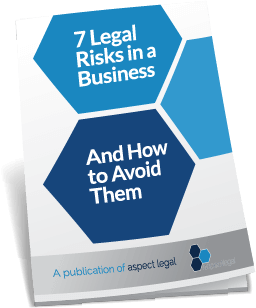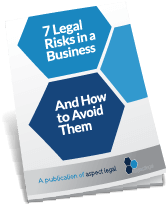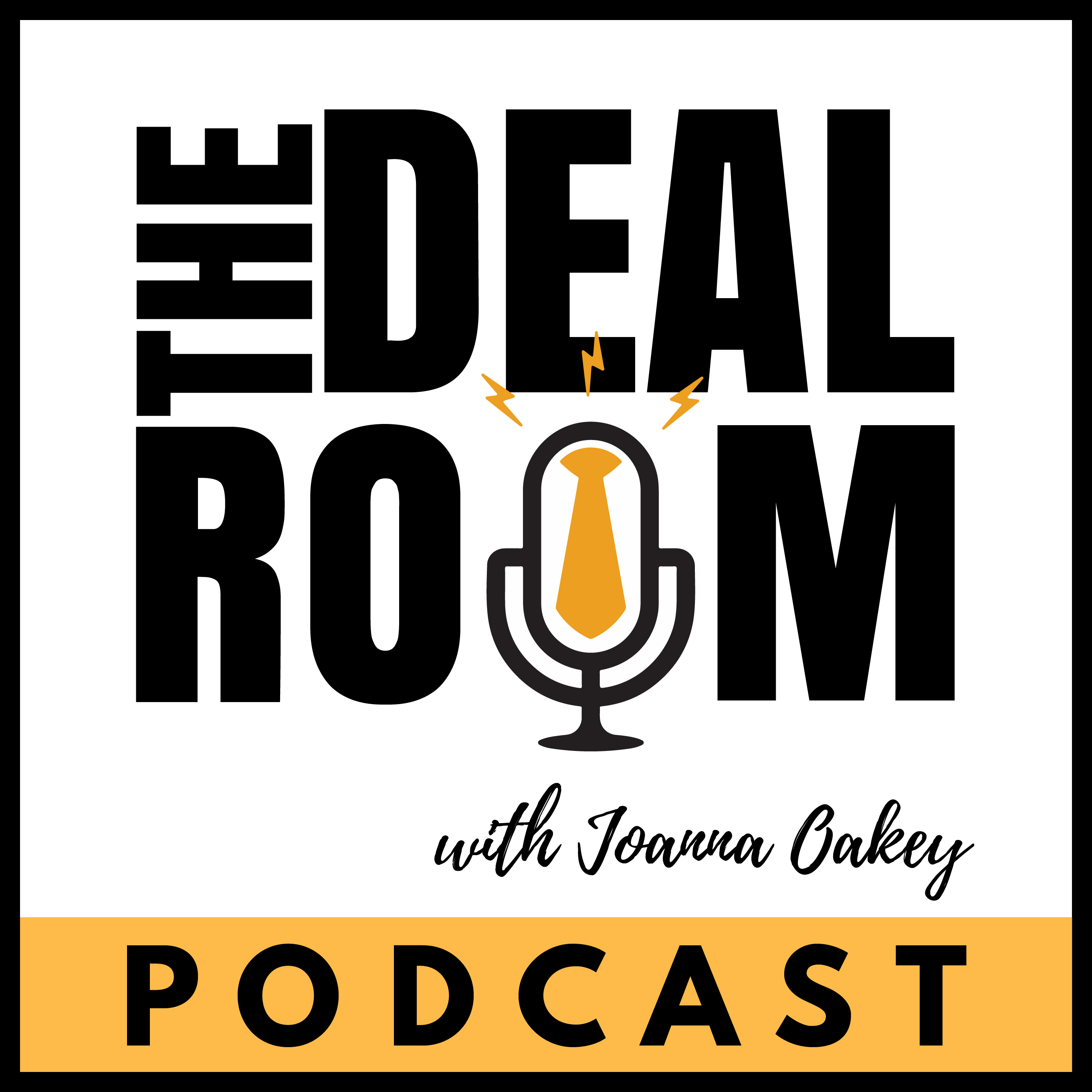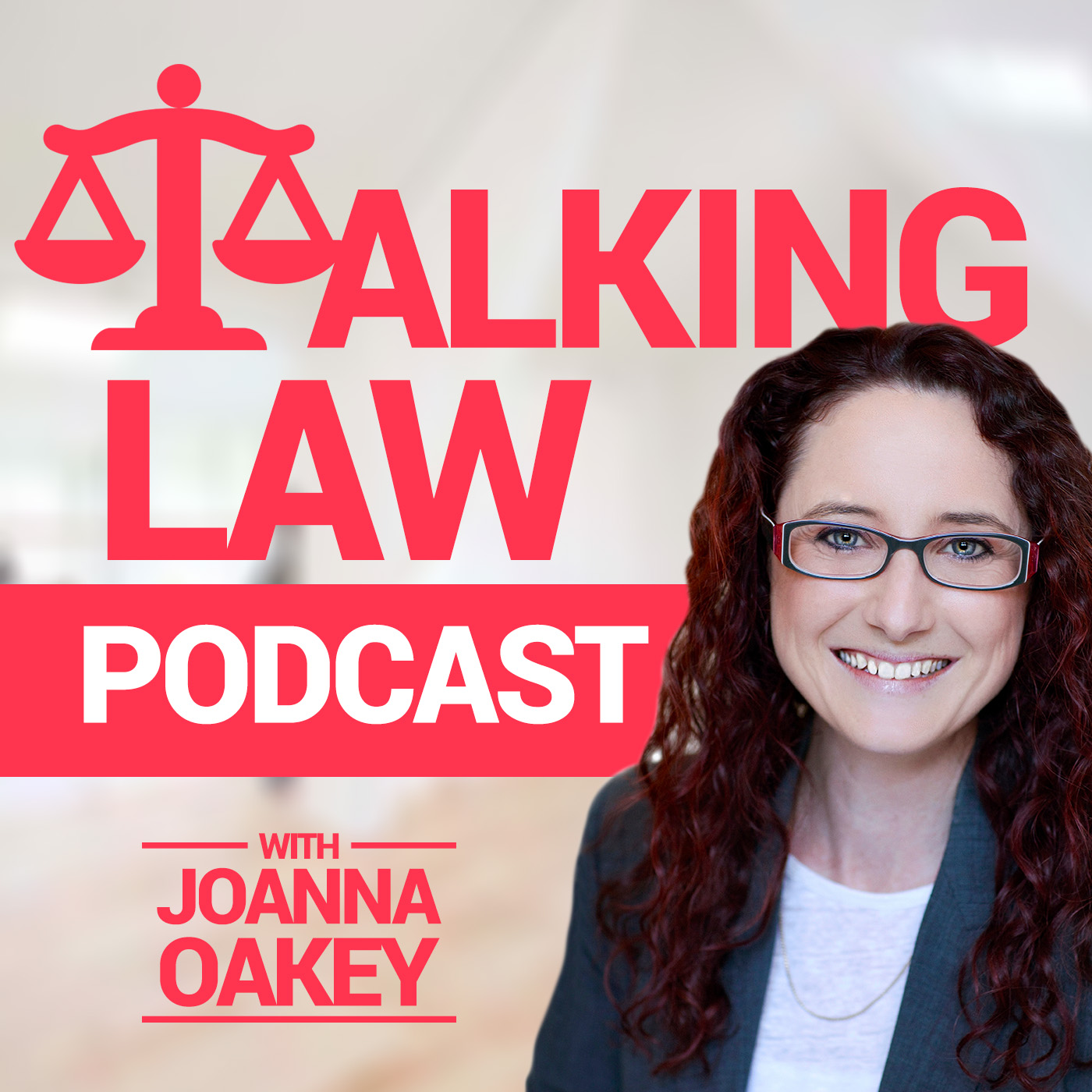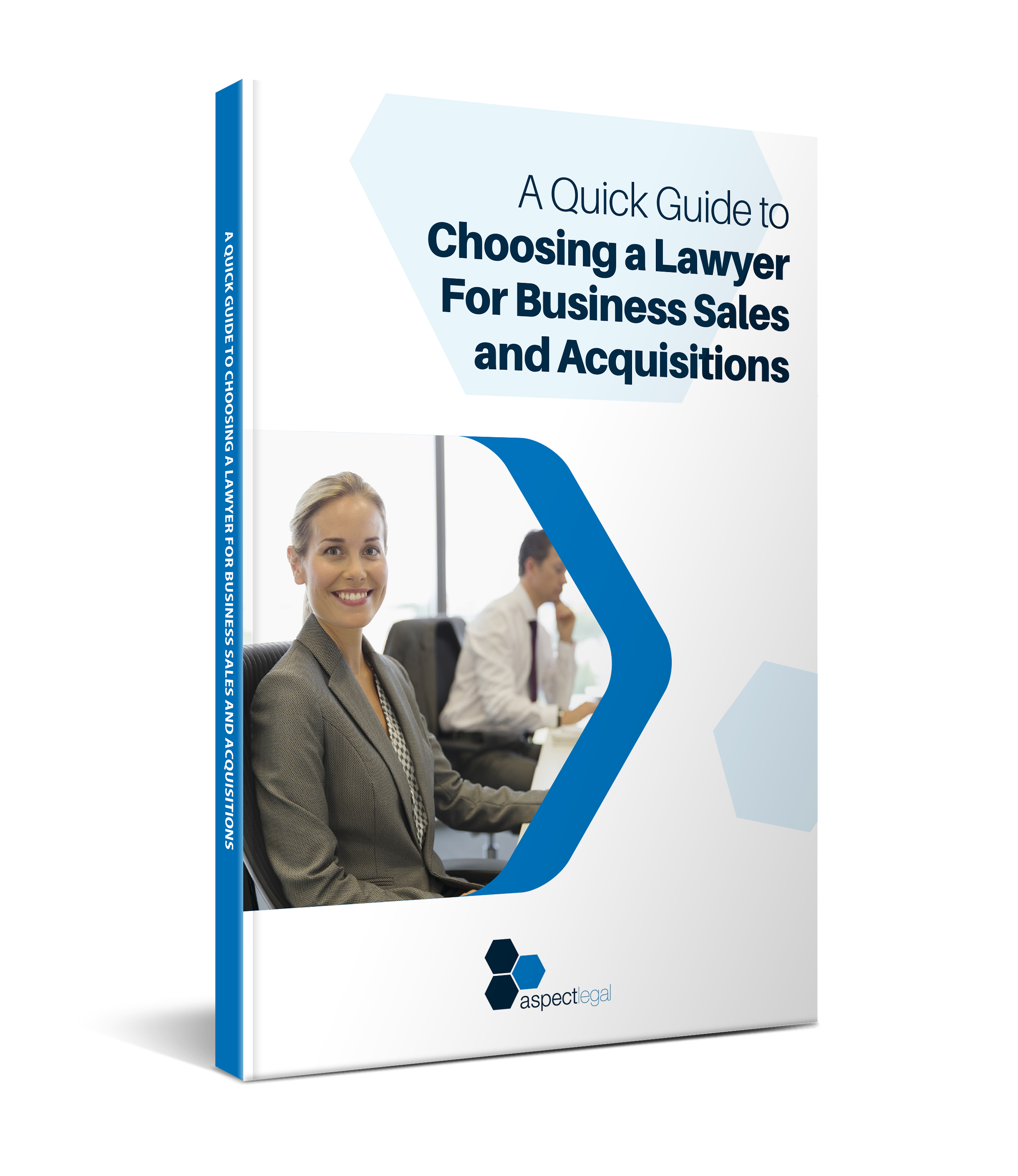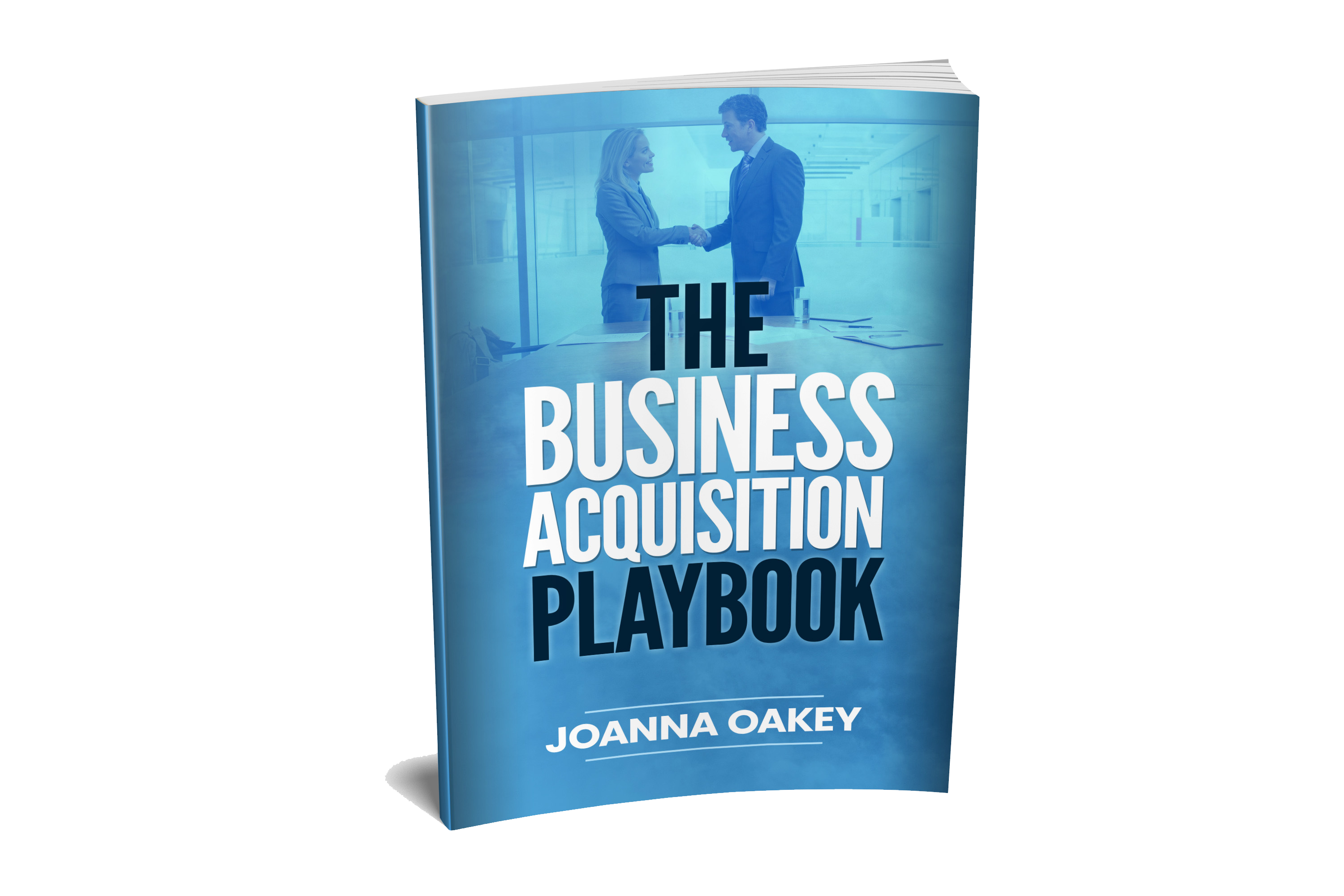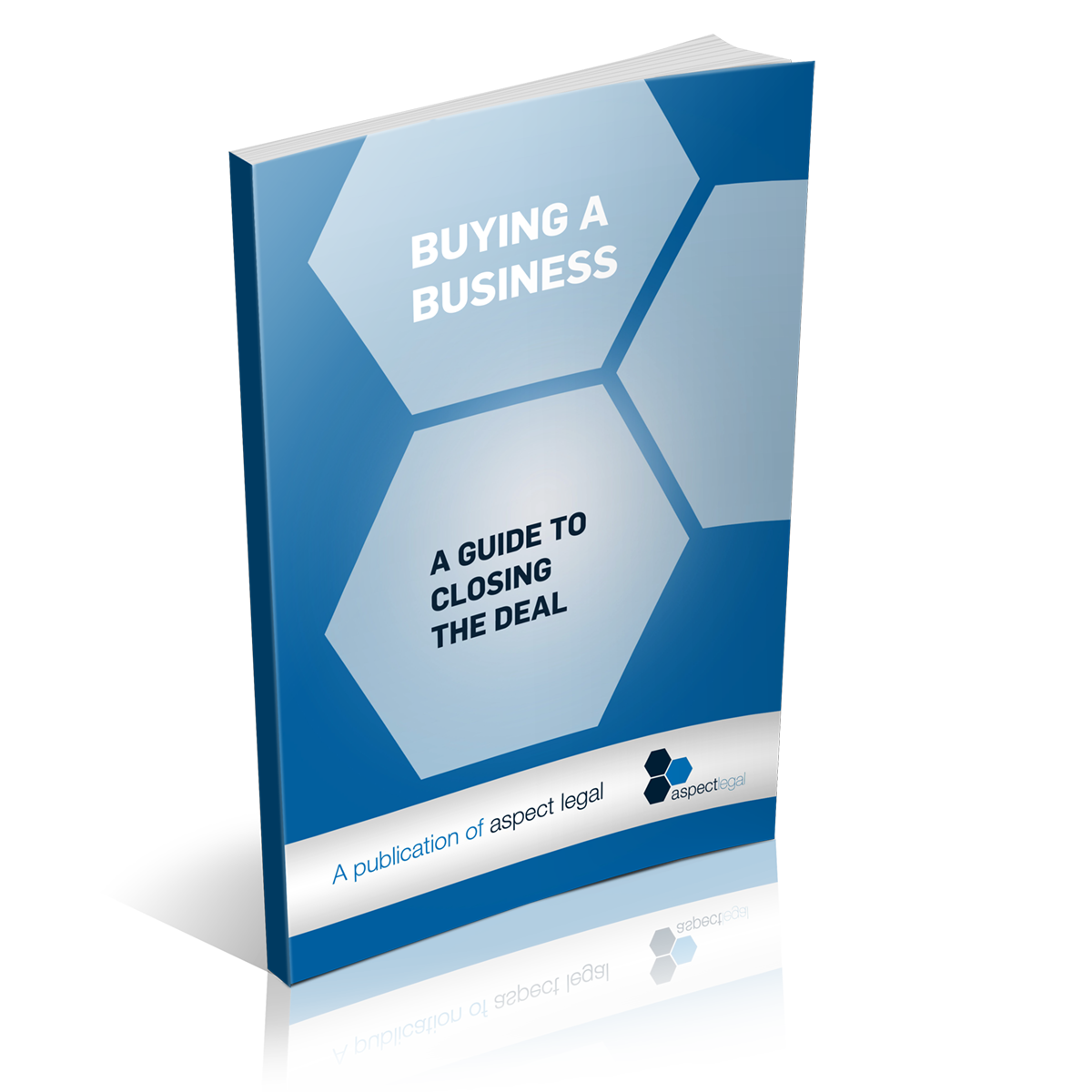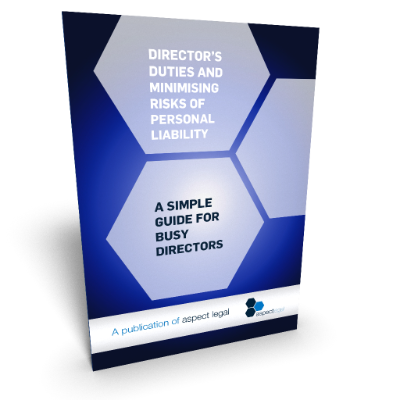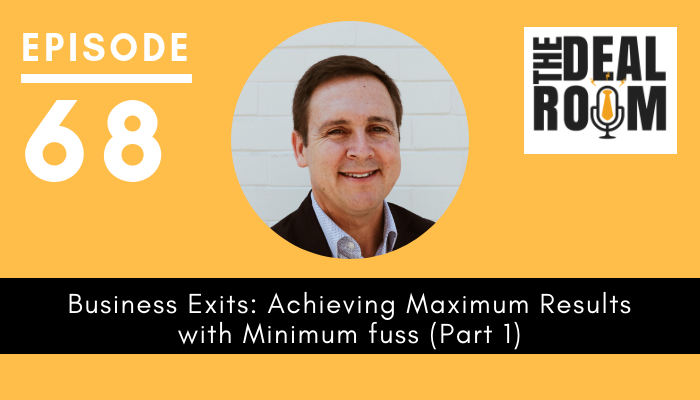
Business Exit advisor Koos Kruger of Business Companion maps out a unique approach to business exit planning where business owners progressively step out of the business within a five-year window. Listen in to learn all about this interesting approach in this week’s episode of The Deal Room podcast!

Episode Highlights
- A transition from accounting to exit advisory
- Break down the timeline and work backwards
- Our starting point is always the owner
- Helping clients through the thought process
- Great offers are not always as good as they look
- Progressively stepping out of the business
- Finding a general manager or CEO
Joanna: Hi, it’s Joanna Oakey here and welcome back to The Deal Room podcast brought to you by our commercial legal practice, Aspect Legal.
Today we’re launching a fascinating 2-part series with the fabulous Koos Kruger of Business Companion. Koos is an accountant turned exit advisor, who now specialises in providing business advice and exit planning services for small and medium businesses.
In part one of this two-part series, Koos maps out his unique approach at a progressive exit for business owners within a 5 year window. Then in part two, we drill into a number of moving factors you ought to consider when using this approach and wrap up the series with some practical tips for accountants, brokers and business advisors working within this space.
So don’t go anywhere! Here we go!
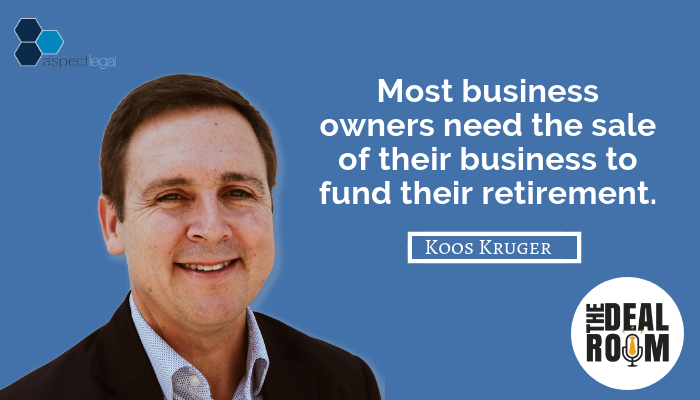
Joanna: Koos, thank you so much for coming and chatting to us today.
Koos: Thank you Joanna. Thanks for having me.
Joanna: My absolute pleasure. I already know that today is going to be an absolute cracker. And of course, as I said, we want to talk about a different approach to business broking. But before we start on that line I’d like to just maybe go back a few years because I know from our previous discussions that you in fact started, not so much in the business sales and acquisition space, but in the accounting space.
A transition from accounting to exit advisory
Joanna: Maybe you can tell us a little bit about that and how did you make a transition from that space into the sales and acquisitions or exit advisory.
I guess what I forgot to say is that you were an accountant at one of the big four, so you were with KPMG. I guess that probably gave you an interesting perspective that many exit advisors and consultants maybe don’t have.
Koos: Yeah, what happened. It’s about five or six years ago, I really just identified there was this need in the market for small medium owners to really have help in getting out of their business.
We sit with a baby boomer society where there’s a fair number of people turning 65 every year. Those are the people who are looking to exit their business, and looked at some of the stats around and quite sort of scaringly is that one in five businesses actually sell.
The other big thing is that most business owners actually need the sale of their business to fund their retirement. I just felt that need for how do we work with these people. Not just how do I set up another brokering practice and we just try and sell the business. But how do I give those people a good fair chance to be one of the five whose business actually sells. That’s how we got into the space of exit planning and focusing on the owner as the starting point.
So the need we sort of realise that of all those business owners out there needing a different approach of how do I actually get out of my business. It’s not just a one morning wake up and decide I’m going to sell the business and become one of the 80 percent that don’t sell their business.
The approach we’ve adopted, the stakes actually have sort of is leading the charge on this is really you start selling your business five years before you actually get into the sale of it. And that is really how do I prepare it. How do I make sure that I’ve got an attractive asset that I’m putting out there before I actually go out there and just put it on the market or go to someone and say please find me someone who’s going to take this thing off my hands.
Break down the timeline and work backwards
Joanna: I think you’re absolutely right and we’ll dig into that a little bit more. But one of the interesting things there. I quite often have this discussion because I’m absolutely on the same page as you. The earlier business owner thinks about sale, the more they do to prepare their business but also themselves mentally for sale, the better the process will be, the more options they’ll have, likely better price. All of those sorts of things.
But what I see is the reality is that owners will find it very hard to think about exit until the point where they become really committed to the idea of exit. At that point, five years just feels too long for them to be sitting and thinking about it.
How do you get your clients over that chasm? I mean is that something that you have seen happen before? And how do you get your clients over that chasm?
Koos: It’s definitely something that’s out there. People go “Well five years is, that’s so far into the future.” But when you sit and you actually break it down and go “All right. Let’s just unpack this five years.”.
Most of the time a buyer will come and say “I want the owner to work one or two years in the business.” Therefore, the business must sell in three years’ time. The actual sales process, marketing the business, going through due diligence, sales contracts can be anywhere between 12 months. So we’re now two years into the future of when you’re actually is ready for this thing to be sold. Now let’s start talking about where you as a business owner. Let’s start looking at what do you need out of this business to fund your life into the future. Let’s see where the business is at.
My experience is 90 percent of the time there’s a gap between “Well I need the business to be worth a million.” Oh you know what, the business is actually worth 600,000. So if we’ve got to do something about this to meet your future objectives, you’re not going to do that the day you decide to put the business on the market so let’s start thinking about it. You’ve got two years to get that right. That’s the conversation or the approach I say to business owners as a minimum to have a look at.
The more runway you give yourself leading up to the sale, the less stressful and the easier it is actually to go “I am going to get to my objective in meeting the value that I’m looking for out of the business.” So that’s how we overcome it. It’s really just work backwards and say “Yep, I agree with you. You want to be out at 60. Okay, let’s work backwards and and see where you are. Therefore, there is no time left.”
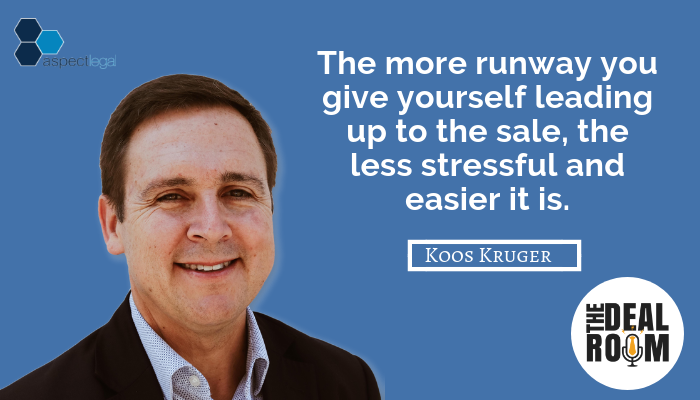
Our starting point is always the owner
Joanna: And I’d like to talk at some stage about the book that you have written, Business Exit Companion and maybe we can talk about some of the strategies that you highlight in that book.
In the foreword to that book, John Brain has written on foreword where he talks about two examples that he’s seen in his friends. Bill who seems to have had a medical business and exited not on his terms and Bob who had a (I can’t remember what it was), a car dealership or something like that. Can you tell us a little bit about? I’m probably not doing the foreword much justice here. Can you tell us a little bit about those stories and what the message is there?
Koos: So just about the forward. We assisted John in sort of the exit of his business and taking him through that. But the key message is that it’s not only the business that needs to be ready and prepared for this exit event. It’s actually more important for the actual owner to be ready and prepare for the event.
The example that John has used, which is sort of two of his friends, is leading medical practitioner, surgeon so therefore money was not an issue. He retired. He went down the south coast of New South Wales and lived a great lifestyle. But what he didn’t do was prepare himself emotionally, and what I often say to business owners “I give you the check that you’re looking for. You give me the keys and Monday morning you don’t come into the office anymore. Why are you going to get out of bed Monday morning?”.
A lot of people will say “Well I’m going to go on a cruise and I’m going to play golf.” No no no. That’s what you’re going to do. Explain to me what is your purpose in life going to be. A big part of that is because business owners by nature they purpose why they get up in the morning is hooked and centered around the business itself. They almost find purpose in life for that so that’s an important thing as part of this preparation is really develop something outside the business.
Now in these two examples. That’s the surgeon I refer to did not have that and it got to a point where his wife said “Well you’ve got to go check yourself for Alzheimer’s. I think you might be even developing dementia. There’s something medically wrong with you.” And you know went to his doctors, and know the people in the sort of doctor’s community. At the end of the day, the doctor just said to him “Mate, there’s nothing medically wrong with you. Your problem is you never emotionally prepared for your retirement.”.
Joanna: Wow.
Koos: Where the other example in there, the guy who had a car dealership and owned a few restaurants and things like that, did exactly that type of planning. Got some interests outside his businesses, sold it before he left and financially they were sort of equally well off. But he actually created a new purpose post owning the car dealership. That’s what got him and is keeping him going.
I think a lot of time when people think about selling the business, they are all focused on the business. My view is that the business is merely an instrument to meet the actual owner’s own personal objectives, rather than the business is the objective.
Joanna: I tell you what, we are getting deep here Koos. I knew this was going to be a good discussion. I love it! And just as an aside, do you recall what the car dealer owner had as his new purpose?
Koos: These two friends of John I never make myself. But I know that he sort of had an interest in a restaurant. He got involved because he was quite in sailing so got involved as being one of the board members of the local yacht club and served on a number of charities and things like that. It was not just how am I going to keep myself busy, but how am I going to continue adding value to society.
Joanna: I love it. I love it. And as I said, these are deeper issues and I think the reality is that these conversations. Most advisors won’t have these conversations because they don’t come up. You have to bring them up willfully. And then you have to know what to do with the conversation once it’s come up.
Koos: So true. Because they are hard conversations and I’ll blame this on the blokes. They don’t want to talk about these things.
Joanna: Yeah. A bit too touchy feely.
Koos: Yeah. Lets us talk about the numbers and how much are we going to get for this thing. My mate in the pub told me that he got so much. Am I going to get the same? Yeah.
Personally, when I work with someone, I go “If I don’t understand you and what you want, I can’t do my job as to what do we do to change the business so that it can deliver what you want.” Our starting point is always the owner, not the assets around him.
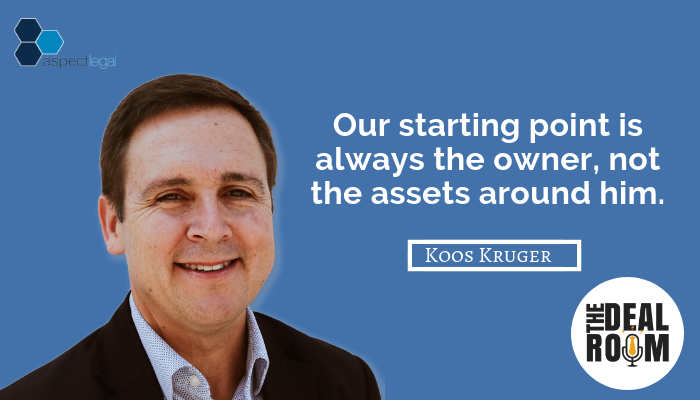
Helping clients through the thought process
Joanna: That’s really interesting. And so when you have those discussions about purpose, about what it is that they can turn to for fulfilment after their business baby moves on to the next person, presumably sometimes you must be met with the answer of “I don’t know. I don’t know what my purpose is.” How do you deal with that? What are the steps they take then?
Koos: It often as I say come to that – I don’t know. We do use sort of a process which sort of unpacks eight different components of a person’s life so what’s their health, what are they going to contribute to society, friendships. That helps them through a thinking process.
We also bring the partner, their life partner or whatever, if they’ve got one. Bring them into the same discussion because most sort of situations is they are someone that quite often is at home especially if you look at the baby boomer age. I think the younger generation families today most have got you know husband and wife working.
But you normally have a situation that these two people saw each other four hours in the evening before they used to go to bed and sometimes over weekends. Where now, they actually have to be together for 24 hours a day. That’s why involving that person in the discussion actually helps the discussion because you go well this person has sort of set up their life and it helps that the owner go they are not going to be here to babysit me.
Often to get change you need a burning platform and having that type of discussion. Well, you know what your wife is involved at the tennis club and she is involved in this and she’s you know involved at Rotary and she does this because she fills up her whole day already and that’s why she gets up in the morning. She is not going to give all of that up to become your new babysitter. Therefore, we’ve got to get your act together because else you’re going to become a lonely old person sitting in your chair, watching television and watering the flowers.
Sometimes you’ve got to be that direct. Call it like it is. It’s a hard topic to talk about but it doesn’t help beat around the bush about it. That’s sort of the approach approach we follow.
Joanna: Yeah. What are the reactions that you’ve had to this discussion? Presumably, there must be a mixed bag of reactions.
Koos: I’ve actually never really had anyone that’s ever said to me you know what, that’s got nothing to do with you. It’s maybe because I’m upfront by saying “Look, when we work together, I will be asking things about your personal stuff. I will be getting an understanding of what your personal finances look like.”
Great offers are not always as good as they look
Koos: I had an example of a client of ours who was approached by two companies. The business wasn’t on the market. He got tapped on the shoulder by two separate entities. Both put fairly good deals on the table. If you’ve got a one man business and you get a seven times multiple, it’s something to look at.
Joanna: Yeah.
Koos: Now in his instance, he came to us and said “Have a look at this. What do you think about it?” And I had a look at it. We delved into personal living standards and things like that. I said to him let’s have a meeting with your financial planner and unpacked it, modelled it in his financial plan. And in that instance, the financial planning showed that he would have run out of cash if he sold the business by the age of 62.
Joanna: Wow.
Koos: So by just going and saying “Ah! Here’s a deal. Yes, seven times multiple. That must be the best deal ever for a privately-owned, single-owner type of business.” If you just approach it from that perspective, and we’ll talk about how we structured fees. But if that’s your only objective as an advisor or broker to the client, you would have actually damaged that client in the process. So we ran through that and said “Mate, great deal. Wrong time.”
Either you cut down the the living standard in one of Sydney’s very affluent suburbs and you sort of downsize and move somewhere else so that you cut down your costs, or you don’t take the deal.
Now I mentioned the thing about fees. I don’t know if you want to talk about it now or not. But one of the things we do is we charge a fee for service rather than a commission on the sale of the business. That specific example sort of reinforced it, why as a firm we’ve decided that’s the way we do it.
Because as soon as you are commission-driven approach, your approach is how do I get this asset and sell it. Where if you’re a fee for service, and by the way most of the times on the transactions we’ve done the fee for services actually come out cheaper than the actual commission. But that then says I am here to look after the interest of this owner not just the transaction. It’s not just the transaction. My view is that it changes the approach of how you approach the actual sales transaction.
Joanna: Yeah. And so, what actually happened then in the end with this client? I’m guessing he couldn’t take the deal at that time.
Koos: Yeah. He just said “Thank you very much guys, but for these and these and these reasons I cannot take it.” Both parties who made him an offer, when he sort of showed them that “Look, this is what will happen to me.” They went “Look, we can understand that. Let’s see what happens five years or so down the track and we’ll keep talking.”
Joanna: And so, what was the path for him then? So obviously you’ve identified okay here’s this gap in your cash requirements into the future to maintain a similar standard of life and here what your business can provide for you now. Presumably, he has to make that gap in some way even though he didn’t take the deal at that time. So what did he do?
Koos: The big thing in this situation, he is drawing a massive salary out of the business – a fairly large salary for the type of role that he’s playing in the business. And if he sold his business, he would have been paid a market related salary for that role which was about 20 percent of what he took as a salary. So that’s where the gap basically came up.
But at the same time it did show him that look you have to. I mean that’s the role of a financial planner. I don’t do financial planning and that type of advice. But we work with, like I said a tag team together. Mate, you do have to look at what you’re doing because you’re going to come up five to eight years in the future and you’ve got to make sure that there’s enough then because you’re not always going to get this deal and you’re not always going to get that type of salary.
Sometimes a lot of these sort of early conversations actually. You’ll be surprised how many business owners I come across and I ask the question “Have you done your financial planning?”.
“No. I’ve been thinking I should get a financial planner but…”.
It’s one of those things. “Yes, it’s been on my list for five years.”.
And I go, “Okay. Oops. Let’s take some action there.”.
It’s the same on the legal side. You go “So how much estate planning have you done?”.
“No. We did a will when we got married and since then we’ve had kids and grandchildren and…”.
So again, by focusing on the person, I ask those hard questions. Show me your financial planning. How do you know you’re going to be fine if you sell this business because selling a business is not the only exit option that a business owner has got.
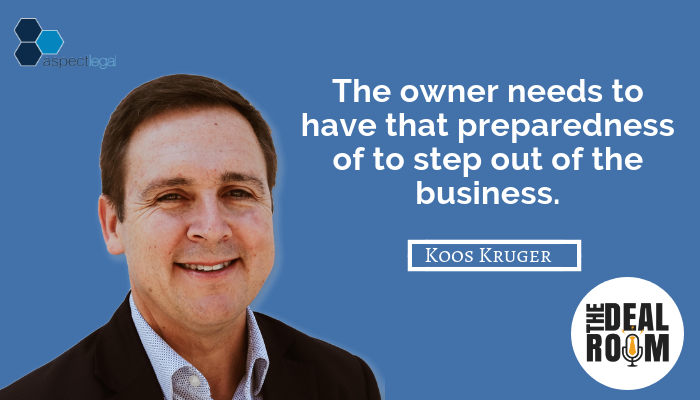
Progressively stepping out of the business
Koos: A lot of people think I’ve only got sort of broadly two exit options. One is I just close things down and I call it a day. Not necessarily liquidate the business. But just sell it and shut the doors. The other option is I have to sell it to someone, may that be staff or may it be family or may it be an external buyer.
My view is there is a third option, especially in an oversupplied market. We’ve successfully done it with a few of our clients.
Implement or install a good general manager CEO. We’ve got large businesses out there that gets run by professional CEOs. So it’s not well if the person is not the owner of the business they can’t run a business. Put a CEO in place in the business. The owner, and this is part of that discussion of purpose especially when they struggle with purpose and things like that. We will help you to become a true chairman of the business. So you’re going to step out of the business but on a monthly basis there’s still some form of involvement being the chairman and the CEO runs the business.
Joanna: That’s an incredibly interesting proposition that you’re running here about the third option to exit. Presumably, you’ve had clients who have gone down this path in the past then? Who have taken this third option? Or is everyone just sort of, had this third option and say “You know what, that’s a great idea, but no. Hell no! I just want to get out.”
Koos: I think yes if you just initially put it on the table, the owner goes “Oh no, that can never work.” But I think when you explain to them that look we bring a person on board. We give that person some skin in the game.
So part of the third option is that of you bringing a CEO into the business that can start running the business for you and the owner starts progressively stepping out of the business. The end objective is just being that of the chairman of the business. Now we covered off earlier that you know how to give people purpose and that is one of the ways of getting purpose by still having some involvement but not having the day to day operational stress of actually running the business.
One part of that is the owner needs to have that preparedness of I will step out of the business. I do admit there are certain clients that we’ve worked with where we haven’t suggest this because of the mere personality of the person is that they won’t give up anything. They need to control everything and that type of structure will just not work for them. But that’s not everyone. So we’ve had that done successfully.
That’s one key part of making that work is that the owner is willing to actually step back. The second part of that is you have to give that general manager or CEO some skin in the game. I’m not by no means suggesting you actually give away equity but you might give them or sell them equity at a slightly reduced rate then what the value is and get them to buy in over a period of time.
We normally put that type of structure in place by bringing the CEO on board sort of a couple of years or so prior to the owners saying “Now I want to really step out so that there is a proper handover. No different than the owners selling their business and being told to stay on for a couple of years while the person who is taking over from you is getting their feet under the table.
Joanna: Wow. That sounds like a really sensible third option that I don’t hear being used a lot. Credit to you for being creative in options that you’re providing to your clients here of how they can deal with this concept of how do we exert that business whilst as you say still maintaining the purpose that works for us because many people are very attached to their business. Quite often something that they have grown over often decades and the thought of them losing all contact with it entirely can create a real issue in approaching any sort of concept of exit. This is a really sensible way of approaching and maybe even taking baby steps over time to move out.
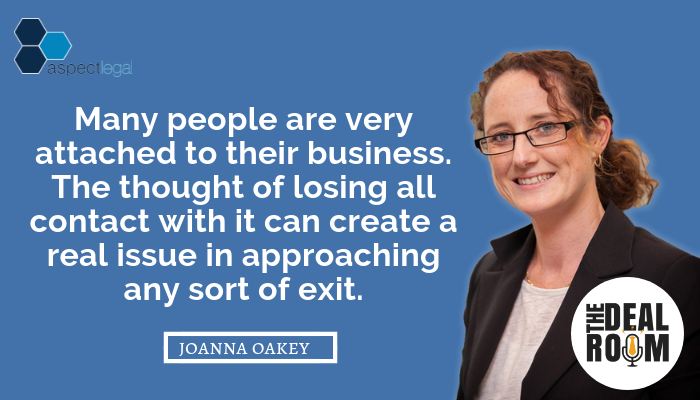
Finding a general manager or CEO
Joanna: How does this work? Where do you find your general managers or your professional CEOs? Is this you just go through a usual recruitment process or is there a different place you go to find these potential CEOs?
Koos: We often go look for them in the larger firms. People who might be sitting in the corporate space, tired of the corporate politics of large organisations and have got the skills and are quite entrepreneurial, but doesn’t have the money to start their own thing. That’s often through networking.
The best place to find people is actually ask people that you know. We often do not use the people we actually know.
Joanna: Yeah, that’s really true. Yeah.
Koos: The times we’ve done it we normally found the person through a head hunting process, a competitor that’s in the same space. People might know someone in there. Then we will tap the person on the shoulder and say “What does this sound like you?”
Joanna: And if you think of some of these examples of these deals you’ve put together, maybe can you talk to us about what makes this something that is more likely to work? Obviously we’ve talked about the the ability of the seller or the business owner to deal with someone else coming into the business and to be able to work with them. But what else are some of the markers? Are there other things that you look for?
Koos: That one as you’ve covered obviously very much the right person and being very clear as to what of those KPIs that we can hold this person accountable to. From day one, there needs to be a clear expectation. Also making sure that you actually structure the business that it runs. I don’t want to say like a corporate listed business, but there’s a proper governance structure in place in the form of proper monthly reporting. There’s a proper board structure. There’s a group of people that meet on a monthly basis. That’s where the CEO needs to come and report back to. That’s where we brainstorm, so that’s where the owner goes “I’ve got this investment. I am not running the investment anymore. But I can still keep an eye on the investment.”
And also ensure that there’s enough structure and processes in the organisation that if something goes wrong it will flag up to the top without the person who owns most of the equity having to be there to be the ears on the ground.
Joanna: Yeah.
Koos: You need to slightly corporatise the business, without implementing red tape and politics in the process.
Joanna: Which is a fine line, isn’t it? That’s a very fine line.
Koos: What I mean by red tape is there’s certain business practices which are just good business practices to have. It doesn’t matter if you’re a small business, medium business or a large corporate in the sense of there should be a management team and it doesn’t have to be 10 people.
But I always say to business owners you should have a trusted person that even you could sit with on a monthly basis and go let’s talk about where the business is going, how did it perform, what are the things I’m going to focus on for the next month. It helps keeping you accountable. And look, being an owner could be lonely.
So having good practices about having proper policies and procedures in place and proper reporting structures and things like that is fine. It’s where you lose the nimbleness of the business by everything has to be done in triplicate and five people have to sit in it and no decisions can be made. It’s really how you structure that and maintain that small business culture in the organisation.
Joanna: That’s it for part one of our two part series with Koos Kruger of Business Companion. We’ll pick up on our conversation with Koos next week, where we’ll drill into a number of moving factors that need to be considered when using this approach. Then we’ll wrap up the series with practical tips for our accountants, brokers and business advisors who are assisting small and medium businesses in their business exit planning.
Please make sure to subscribe on Apple Podcasts, or your other favourite podcast player to get notifications straight to your phone as soon as part 2 is out!
Thanks again for listening in! This has been Joanna Oakey and The Deal Room podcast, a podcast proudly brought to you by our commercial legal practice Aspect Legal. See you next time!
Our Business Sales and Acquisitions Services
Aspect Legal has a number of great services that help businesses prepare for a sale or acquisition to help them prepare in advance and to get transaction ready. And we’ve also got a range of services to help guide businesses through the sale and acquisitions process.
We work with clients both big and small and have different types of services depending on size and complexity. We provide a free consultation to discuss your proposed sale or acquisition – so see our show notes on how to book a time to speak with us, or head over to our website at Aspectlegal.com.au
Disclaimer: The material contained on this website is provided for general information purposes only and does not constitute legal advice. You should not depend upon any information appearing on this website without seeking legal advice. We do not guarantee that the contents of this website will be accurate, complete or up-to-date. Liability limited by a scheme approved under Professional Standards Legislation
